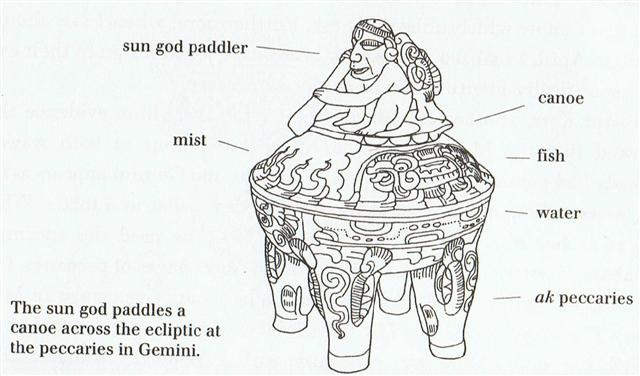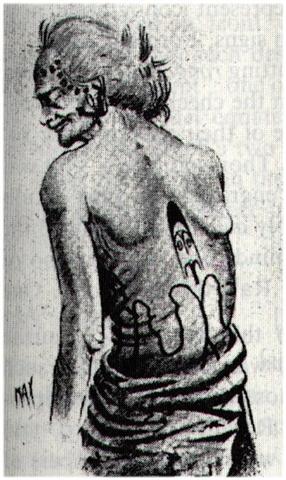|
3.2 There were two celestial bands crossing each other. One of these was certainly the ecliptic path of the Sun and the other planets. The other ought to be the celestial equator, from where vertical right ascension lines could be drawn to the celestial poles.
On Easter Island their World Tree - corresponding to the sacred Ceiba among the Mayas (and evidently also to the Carob tree which was said to need 70 years to mature - might have been the Niu: ... The precessional distance down from the time of rongorongo to that of the First Father can be calculated as around (1842 + 3112) / 26000 * 365.25 = 70 right ascension days, or as 6 days more than 64 = 10 days less than 80. It was evidently Polaris who rose with the Sun when Hun-Nal-Ye became the sky, and it would have been in day 392 (January 26) - 10 = 382 (January 16) when the companion star of Polaris (*26.6), viz. the Belly of the Fish (Baten Kaitos, ζ Ceti, *26.6) would have returned to visibility after the close encounter with the Sun in December 31. Polaris never sank below the horizon and it was therefore outside the cycles of heliacal risings and settings ...
Modern science has established as fact that once upon a time there were great palm tress growing also on Easter Island. According to the text on the Mamari (C) tablet and how Metoro seems to have translated this to Bishop Jaussen on Haiti the Sun rose together with the crucial star Bharani (41 Tauri) in May 1 (80 + 41 = 121). Once upon a time this star would have risen with the Sun at 0h (where the ecliptic crossed the equator of the sky).
But at the ancient time of Bharani they probably waited for the return to visibility of the stars after the close encounters with the blazing rays from the Sun. Thus 41 + 16 = 57 ↔ 137 - 80 ↔ May 17:
Te Goe means the Milky Way and half a year after May 19 - in November 18 (322 = 139 + 366 / 2) - was the culmination (at 21h) of The Breast of Cassiopeia (Schedir).
Now we can begin to perceive why Ga2-27 was glyph number 57:
|
|||||||||||||||||||||||||||||||||||||||||||||||||||||||||||||||||||||||||||||||||||||||||||||||||||||||
 .
.









